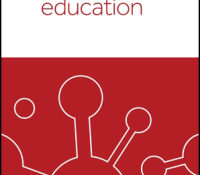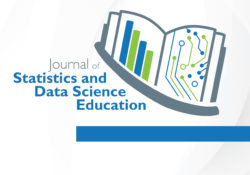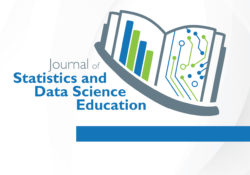tandfonline.com har udgivet en rapport under søgningen “Teacher Education Mathematics”: ABSTRACT Formulae display:?Mathematical formulae have been encoded as MathML and are displayed in this HTML version using MathJax in order to improve their display. Uncheck the box to turn MathJax off. This feature requires Javascript. Click on a formula to zoom. ABSTRACT We examine whether establishing a new university (or faculty) in a region affects new firm creation within that given region. We identified a quasi-experimental design based on Spain’s 1983 University Reform Act, which opened the door to founding new universities at the regional level. We use a generalized difference-in-difference model to estimate this relationship. The results indicate that establishing a new university has a significant positive effect on new firm creation. We then introduce an analysis by the… Continue Reading →
Like this:
Like Loading...
tandfonline.com har udgivet en rapport under søgningen “Teacher Education Mathematics”: Abstract Formulae display:?Mathematical formulae have been encoded as MathML and are displayed in this HTML version using MathJax in order to improve their display. Uncheck the box to turn MathJax off. This feature requires Javascript. Click on a formula to zoom. Abstract To provide an appropriate incentive for teaching profession, the important questions are “how much should we pay?” and “which factors influence potential teachers’ decision the most?” This research evaluates the factors that discourage and encourage potential teachers to join the profession in Cambodia and Laos by applying a discrete choice experiment to analysis teacher trainees’ preferences for school location, classroom condition, non-teaching professions, and indirect monetary incentives. The result highlights reasons and a possibility of potential teachers to… Continue Reading →
Like this:
Like Loading...
eric.ed.gov har udgivet: Stereotypes, role models played by teachers and social norms influence girls’ academic self-concept and push girls to choose humanities rather than science. Do recruiters reinforce this strong selection by discriminating more against girls in more scientific subjects? Using the entrance exam of a French higher education institution (the Ecole Normale Superieure) as a natural experiment, we show the opposite: discrimination goes in favor of females in more male-connoted subjects (e.g. math, philosophy) and in favor of males in more female-connoted subjects (e.g. literature, biology), inducing a rebalancing of sex ratios between students recruited for a research career in science and humanities majors. We identify discrimination by systematic differences in students’ scores between oral tests (non-blind toward gender) and anonymous written tests (blind toward gender). By making comparisons… Continue Reading →
Like this:
Like Loading...
eric.ed.gov har udgivet: One way to improve struggling schools’ access to effective teachers is to use selective transfer incentives. Such incentives offer bonuses for the highest-performing teachers to move into schools serving the most disadvantaged students. In this report, we provide evidence from a randomized experiment that tested whether such a policy intervention can improve student test scores and other outcomes in low-achieving schools. The intervention, known to participants as the Talent Transfer Initiative (TTI), was implemented in 10 school districts in seven states. The highest-performing teachers in each district–those who ranked in roughly the top 20 percent within their subject and grade span in terms of raising student achievement year after year (an approach known as value added)–were identified. These teachers were offered $20,000, paid in installments over a… Continue Reading →
Like this:
Like Loading...
tandfonline.com har udgivet en rapport under søgningen “Teacher Education Mathematics”: ABSTRACT ABSTRACT Background: Research on peer assessment has noted ambiguity among students in using peer assessment for improving their work. Previous research has explained this in terms of deficits in the student feedback, or differences in student views of what counts as high-quality work. Purpose: This study frames peer assessment as a social process in the science classroom. The aim is to explore peer assessment in science education as social practice in order to contribute to an understanding of the affordances and constraints of using peer assessment as a learning tool in science education. Design and Method: The study was conducted in four lower secondary school classes, school years 8 and 9, in two different schools. An intervention study was… Continue Reading →
Like this:
Like Loading...
eric.ed.gov har udgivet: One way to improve struggling schools’ access to effective teachers is to use selective transfer incentives. Such incentives offer bonuses for the highest-performing teachers to move into schools serving the most disadvantaged students. In this report, we provide evidence from a randomized experiment that tested whether such a policy intervention can improve student test scores and other outcomes in low-achieving schools. The intervention, known to participants as the Talent Transfer Initiative (TTI), was implemented in 10 school districts in seven states. The highest-performing teachers in each district–those who ranked in roughly the top 20 percent within their subject and grade span in terms of raising student achievement year after year (an approach known as value added)–were identified. These teachers were offered $20,000, paid in installments over a… Continue Reading →
Like this:
Like Loading...
eric.ed.gov har udgivet: When teachers do not know the history of science well, when they misunderstand and underestimate its educational importance, it becomes a serious obstacle for the improvement of their methodological skills. This paper has a goal to describe author’s method how to teach the history of mathematics. This method is aimed at training math teacher’s profession-oriented qualities. These qualities form a historical component of teacher’s culture of mathematics and methodology. Besides, the paper describes the techniques and results of experimental tests for the efficiency of this method. These materials can be useful for teachers who create a cultural and historical atmosphere on math lessons at school and for university teachers who use historical mathematical ideas in their work. Link til kilde
Like this:
Like Loading...
tandfonline.com har udgivet en rapport under søgningen “Teacher Education Mathematics”: ABSTRACT Formulae display:?Mathematical formulae have been encoded as MathML and are displayed in this HTML version using MathJax in order to improve their display. Uncheck the box to turn MathJax off. This feature requires Javascript. Click on a formula to zoom. ABSTRACT There has been a recent emergence of scholarship on the use of fun in the college statistics classroom, with at least 20 modalities identified. While there have been randomized experiments that suggest that fun can enhance student achievement or attitudes in statistics, these studies have generally been limited to one particular fun modality or have not been limited to the discipline of statistics. To address the efficacy of fun items in teaching statistics, a student-randomized experiment was designed… Continue Reading →
Like this:
Like Loading...
tandfonline.com har udgivet en rapport under søgningen “Teacher Education Mathematics”: Abstract Formulae display:?Mathematical formulae have been encoded as MathML and are displayed in this HTML version using MathJax in order to improve their display. Uncheck the box to turn MathJax off. This feature requires Javascript. Click on a formula to zoom. Abstract We performed an empirical study of the perceived quality of scientific graphics produced by beginning R users in two plotting systems: the base graphics package (“base R”) and the ggplot2 add-on package. In our experiment, students taking a data science course on the Coursera platform were randomized to complete identical plotting exercises using either base R or ggplot2. This exercise involved creating two plots: one bivariate scatterplot and one plot of a multivariate relationship that necessitated using color… Continue Reading →
Like this:
Like Loading...
tandfonline.com har udgivet en rapport under søgningen “Teacher Education Mathematics”: Abstract Understanding the abstract principles of statistical experimental design can challenge undergraduate students, especially when learned in a lecture setting. This paper presents a concrete and easily replicated example of experimental design principles in action through a hands-on learning activity for students enrolled in an experimental design course. The activity, conducted during five 50-minute classes, requires the students to work as a team to design and execute a simple and safe factorial experiment, and collect and analyze the data. During three in-class design meetings, the students design and plan all aspects of the experiment, including choosing the response and explanatory variables, making a list of needed supplies, creating a randomization schedule with the Minitab DOE utility, and writing a statistical… Continue Reading →
Like this:
Like Loading...





